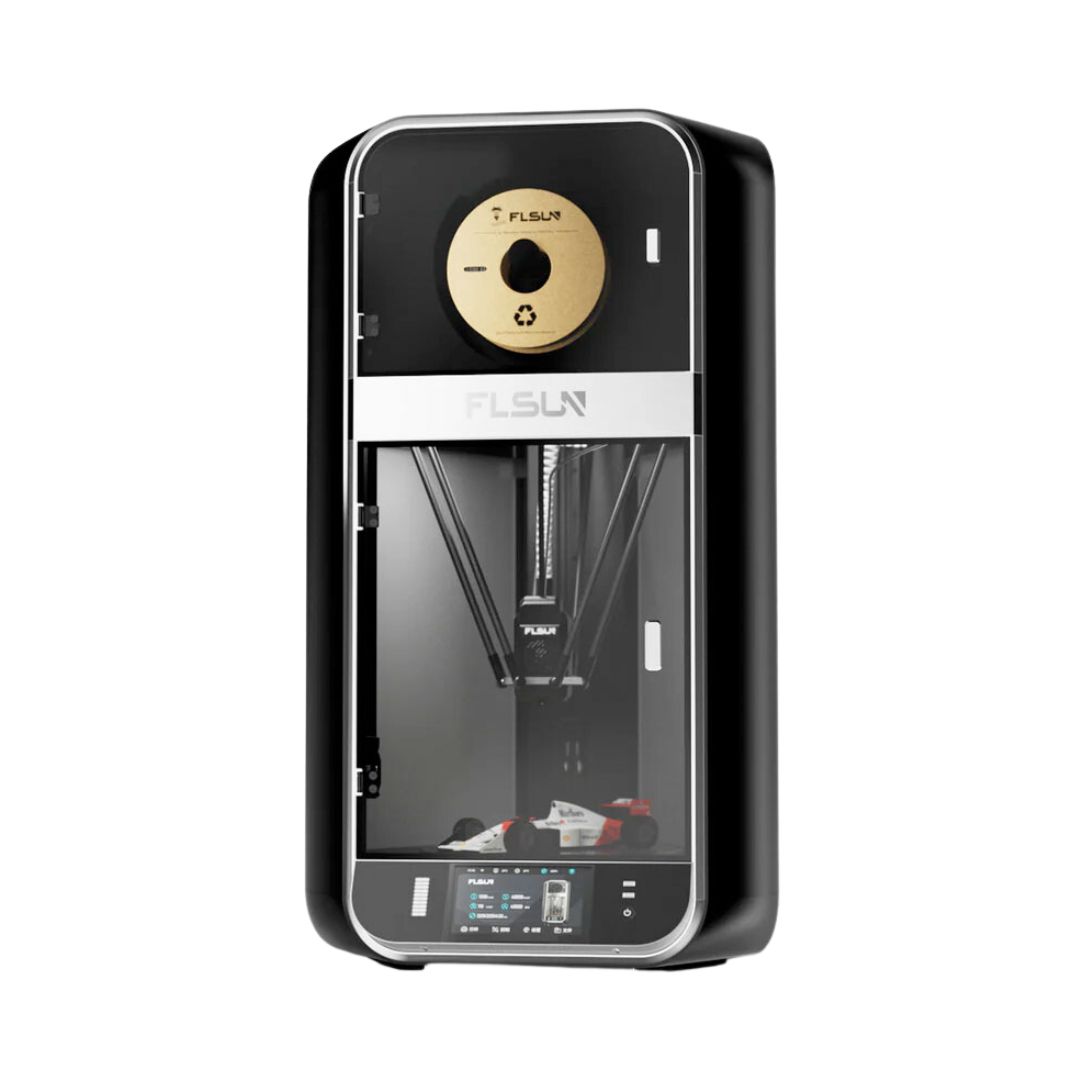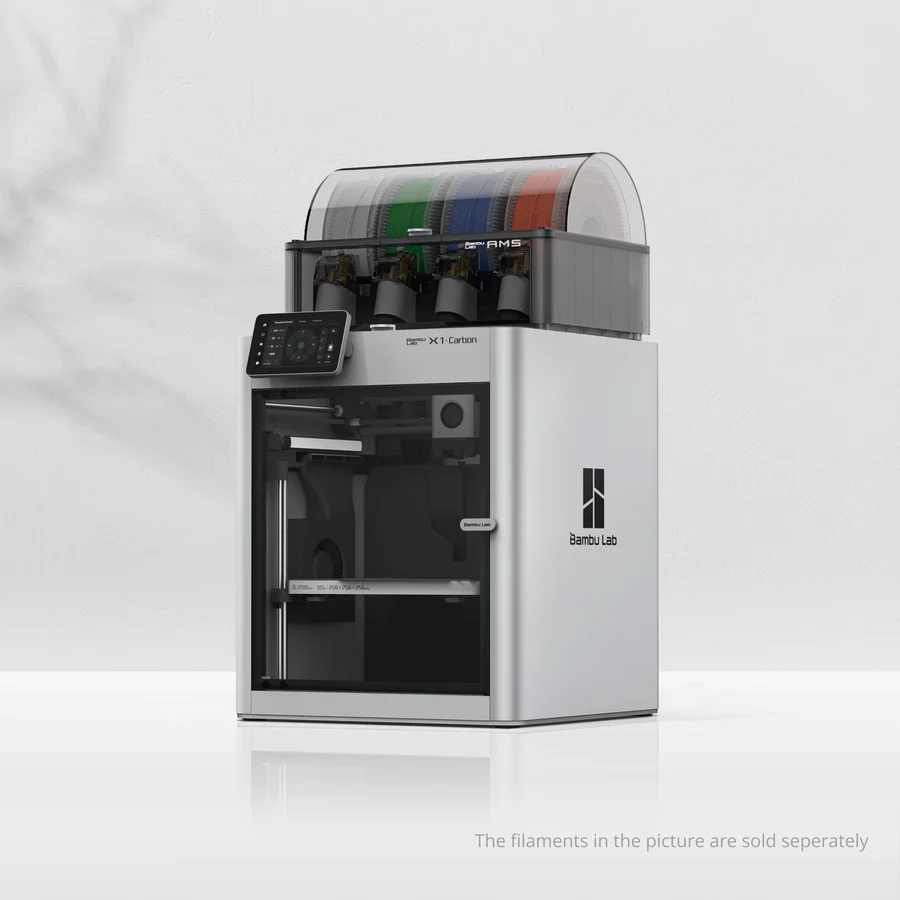Compare S1 PRO vs X1 carbon
Comparison between the best 3D printers
Choose the best 3D printer at the best price. The cheapest 3D printers are here.
Buy a 3D printer here with 3D Fila.
 |
 |
|
| Model | S1 PRO |
X1 carbon |
| Printing Material | Filament | Filament |
| Buy Filament for FLSUN S1 PRO | Buy Filament forBambu Lab X1 carbon | |
| Estimated price | $1500,00 | $1449,00 |
| Manufacturer | FLSUN | Bambu Lab |
| Release Year | 2024 | 2023 |
| Print Volume [mm] | 320x320x430 | 256x256x256 |
| Printer Size [mm] | 450x450x1200 | 389x389x457 |
| Weight [kg] | 41 | 14,13 |
| Power Loss Recovery | YES | YES |
| Enclosed printer | YES | YES |
| Bed Leveling | Automatic | Automatic |
| Filament End Sensor | YES | YES |
| Bed type | Heated | Heated |
| Power supply system | Direct Drive | Direct Drive |
| Standard nozzle | 0,4 | 0,4 |
| Maximum Nozzle Temperature [°C] | 350 | 300 |
| Maximum Bed Temperature [°C] | 120 | 120 |
| Maximum printing speed [mm/s] | 1200 | 500 |
| Filament holder | YES | YES |
| Camera for supervision | YES | YES |
| Recommended filaments | PLA, PETG, TPU, ABS, ASA, Nylon, PC, PP, HIPS | PLA, PETG, TPU, PVA, PA, PA-CF, Nylon, PC |
| Recommended slicers | FLSun Slicer 2.0, Orca Slicer | Bambu Studio, Super Slicer, Cura, Prusa Slicer, Orca |
| Maximum Resolution [mm] | 0,01 | 0,1 |
| Processor | Quad ARM A7 1.2 GHz | |
| Display | Touchscreen 7'' | Touchscreen 5'' |
| Power Supply | 500W 110-240V, 50/60HZ | 350 W |
| Connectivity | Wi-Fi, USB, app FL Sun World | Wifi, Bambu bus, Cartão SD |
| Operating systems | Windows, Mac | Windows, Linux, Macbook |
| Date of registration in the system | 2024-12-16 | 2024-04-10 |
| Release date | 2024 | 2023 |
| Extra features | The FLSUN S1 Pro is a high-speed Delta 3D printer, reaching up to 1200 mm/s with 40,000 mm/s² acceleration. It features a build volume of 320 mm (diameter) x 430 mm (height), a 350°C hotend, dual-zone heated bed up to 120°C, a 50°C heated chamber, and an active filament drying holder. It includes a camera for remote monitoring, integrated UPS for power-loss safety, a HEPA filter, and a 7 touchscreen interface. Perfect for large and complex projects. | The Bambu Lab X1 Carbon revolutionizes 3D printing with stunning design, high print speeds, and a streamlined user experience. It stands out with its CoreXY system, a hotend capable of reaching 300°C, allowing for a wide range of filaments. Its LiDAR-assisted bed leveling system, vibration compensation, and AMS multicolor printing capability raise the industry standard. Print quality is impressive, with the ability to fine-tune for perfection. The X1 Carbon, with its closed build volume, not only promises but also delivers one of the most advanced 3D printing experiences available to consumers. |
| Support for multiple colors and materials (AMS and CFS) | NO | YES |
Notes * |
||
| Cost-benefit | 7 / 10 | 7 / 10 |
| Hardware | 5.4 / 10 | 6.4 / 10 |
| Tela | . | . |
| Print volume | 4 / 10 | 4 / 10 |
| Performance | 9 / 10 | 4 / 10 |
Conclusion |
| Both the FLSUN S1 PRO and the Bambu Lab X1 Carbon are impressive 3D printers that cater to different user needs, balancing features, price, and performance. The FLSUN S1 PRO, with its larger print volume, maximum speed, and high nozzle temperature, is best suited for users who frequently undertake large projects or require fast production. Its advanced features, such as a dual-zone heated bed, active filament drying, and a robust touchscreen interface, enhance its usability. However, it does not support multicolor printing, which may be a limitation for some users. On the other hand, the Bambu Lab X1 Carbon offers innovative technology with its CoreXY system and advanced bed leveling capabilities, making it a powerful choice for precision and versatility. Although its print volume is smaller and top speed is lower than the S1 PRO, the X1 Carbon provides excellent print quality and support for a wider variety of filaments and multicolor printing through its AMS system. In terms of cost-effectiveness, both models rate similarly, but the features of each may appeal to different types of users. The choice between them ultimately depends on specific needs: the S1 PRO excels in speed and volume, while the X1 Carbon emphasizes precision, variety, and user-friendly technology. Therefore, selecting the best option should be based on individual project requirements and preferences in printing technology. |

